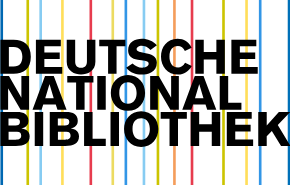EFFECTIVENESS OF ARTIFICIAL INTELLIGENCE TOOLS IN ENGLISH LANGUAGE TEACHING
DOI:
https://doi.org/10.55640/Keywords:
artificial intelligence, English language teaching, educational technology, language learning, AI tools, pedagogical innovationAbstract
This study examines the effectiveness of artificial intelligence tools in English language teaching through comprehensive literature analysis. The research analyzes various AI platforms including ChatGPT, language learning applications, and automated assessment systems to evaluate their impact on pedagogical practices and learning outcomes. The findings suggest that AI tools significantly enhance traditional teaching methodologies when properly integrated into curriculum design, though they cannot replace the fundamental role of human educators in language acquisition processes.
References
1.Karimov, A., & Nazarov, B. (2023). O'zbekistonda ingliz tili o'qitishda zamonaviy texnologiyalar. Tashkent: O'zbekiston Milliy Universiteti Nashriyoti.
2.Fattohovich, D. F. To the problems of complete assimilation of educational materials at schools. European Journal of Humanities and Educational Advancements, 1(4), 55-57.
3.Джалолов, Ф. Ф. (2017). ТЕХНОЛОГИЯ АКТИВНОГО ОБУЧЕНИЯ ИНОСТРАННОМУ ЯЗЫКУ СТУДЕНТОВ НЕФИЛОЛОГИЧЕСКИХ ВУЗОВ. Инновационное развитие, (6), 73-74.
4.Fattohovich, D. F. (2023). Causes of Low Assimilation of Knowledge at General Secondary Schools.
5.Yumutbaevna, N. A. (2021). EDUCATING STUDENTS FOR TOLERANCE IN A BILINGUAL LEARNING ENVIRONMENT. Berlin Studies Transnational Journal of Science and Humanities, 1(1.5).
6.Yumutbaevna, N. A., & Abrarovna, D. M. (2024). Linguistic Foundations Of Teaching A Foreign Language To Elementary School Students. American Journal of Advanced Scientific Research, 1(1), 75-77.
7.Аманбаева, А., & Наршабаева, А. (2024). Using CLIL approach in ESP classes. Преимущества и проблемы использования достижений отечественной и мировой науки и технологии в сфере иноязычного образования, 1(1), 286-288.
8.Мирабдуллаева, Ш. М. (2017). Использование передовых педагогических технологий в обучении иностранным языкам-важный фактор повышения эффективности уроков. Наука и образование сегодня, (2 (13)), 73-74.
9.Juraev, A. B. (2024). MORPHOFUNCTIONAL STATE OF JUDOKA ATHLETES FOR THE PREPARATION OF PROFESSIONAL TEACHING ACTIVITIES. Multidisciplinary Journal of Science and Technology, 4(5), 579-583.
10.Жураев, А. Б. (2024). Формирования развития спортсменов дзюдоистов к подготовке профессиональной педагогической деятельности. Science and Education, 5(6), 254-258.
11.Tagayeva, T. (2024). FEATURES OF METAPHORICAL CREATION OF TRADITIONAL AND PSYCHOLOGICAL PORTRAIT OF HEROES IN S. MAUGHAM'S NOVEL" THE MOON AND SIXPENCE. In Conference Proceedings: Fostering Your Research Spirit (pp. 552-553).
12.Тагаева, Т. (2022). Индивидуальные особенности художественного стиля УС Моэма. Общество и инновации, 3(11/S), 132-137.
13.Тагаева, Т. Б. (2018). ЛИНГВОКУЛЬТУРОЛОГИЧЕСКАЯ ИНФОРМАЦИЯ В СЕМАНТИКЕ АНГЛИЙСКИХ ФРАЗЕОЛОГИЗМОВ. In Культурные инициативы (pp. 205-207).
14.ULUGBEKOVNA, R. S. (2020). The First Period of Washington Irving's.
15.Rasulova, S. U. (2021). INTERPRETATION OF THE EASTERN SUBJECT IN THE WORK OF WASHINGTON IRVING. In Научные школы. Молодежь в науке и культуре XXI века (pp. 76-81).
16.Расулова, С. У. (2022). В. ИРВИНГ ИЖОДИДА “АЛ-ҲАМРО” РОМАНИДАГИ АРАБЧА СЎЗЛАРИНИНГ АСОСИЙ ТУРЛАРИ ВА ТАРЖИМАШУНОСЛИК МУАММОЛАРИ. Oriental renaissance: Innovative, educational, natural and social sciences, 2(5), 862-871.
17.Tukhtaeva, K. (2020). Effectiveness of smart technologies in teaching foreign languages. International Journal of Advanced Science and Technology, 29(5), 1483-1487.
18.Rahmatullayeva, S. (2022). Sun'iy intellekt va til o'rganish: yangi imkoniyatlar. Samarqand: SamDU Ilmiy Jurnali.
Downloads
Published
Issue
Section
License

This work is licensed under a Creative Commons Attribution 4.0 International License.
Authors retain the copyright of their manuscripts, and all Open Access articles are disseminated under the terms of the Creative Commons Attribution License 4.0 (CC-BY), which licenses unrestricted use, distribution, and reproduction in any medium, provided that the original work is appropriately cited. The use of general descriptive names, trade names, trademarks, and so forth in this publication, even if not specifically identified, does not imply that these names are not protected by the relevant laws and regulations.







